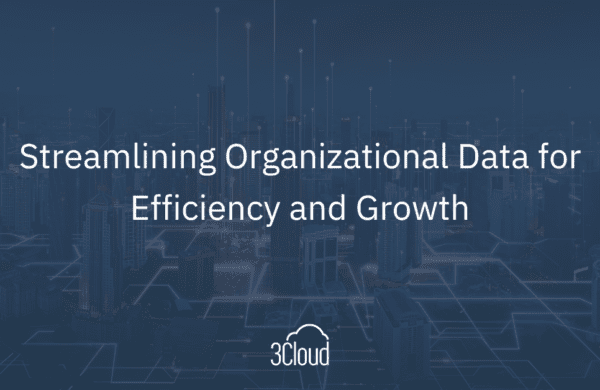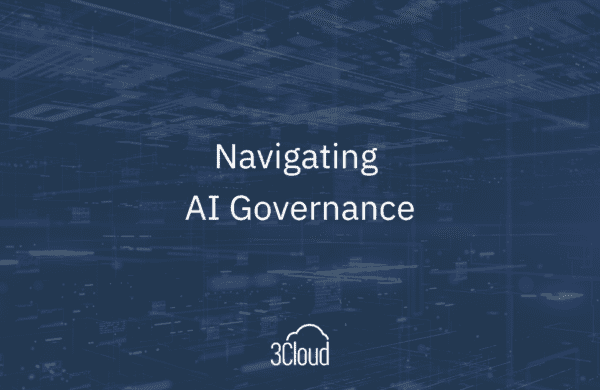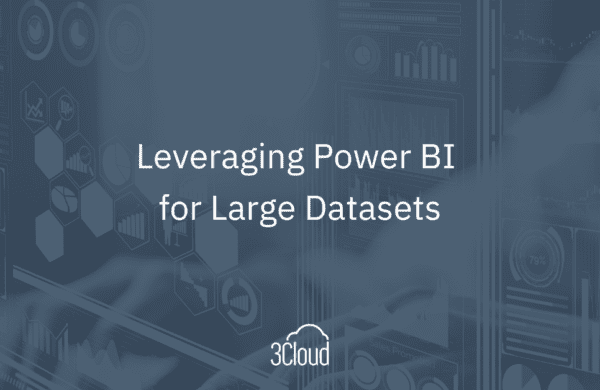As the decade that brought us the Internet of Things and connected devices comes to a close, companies are awash in data. For many, the struggle to manage, store, and make sense of exponentially expanding records is real – especially when it comes to unstructured information. Breakthrough knowledge mining tools, such as Microsoft’s Azure Cognitive Search, can now turn unstructured data into searchable records. At BlueGranite, we’re already putting these capabilities to work for key clients; organizations that once had to dig deep through documents (some collections span decades and number in the millions) in sometimes fruitless searches. This on-demand, fast access to previously buried information is transforming operations across industries.
Unlock Fixed Data
Picture a warehouse – physical or digital – packed with files and documents, or PDFs, JPEGs, and blobs. Now imagine the ability to not only immediately explore the contents within that warehouse, but to also surface exactly what you’re looking for, within moments, using just a key word and the click of a button. It’s happening. And we’re using AI-powered search methods to do it.
Driven by Azure Cognitive Services – tools that give your tech human-like interaction abilities – evolving Cognitive Search fact-extraction capabilities are akin to having a full-time expert team analyze limitless documents to leverage key data. And not just any team; a multilingual team that can translate and analyze text in more than 50 languages, that can perceive sentiment and attitudes, and that can detect key phrases and values.
Knowledge Mining: Limitless Potential
In the eye-opening study by Harvard Business Review (HBR) Analytic Services, “KNOWLEDGE MINING: The Next Wave of Artificial Intelligence-Led Transformation,”explores just how far knowledge mining has come, and how organizations can best use these tools, whether to support employees and enhance operations, or to strengthen customer engagement and reinvent offerings. Whatever your end goal, today’s ability to consume and process archives of unstructured data, quickly and consistently, is unprecedented. The report highlights the abundant potential in automated content comprehension, including:
- Cost savings
- Competitive advantages
- Streamlined processes
- Greater efficiency
- Increased compliance
When report authors surveyed more than 500 HBR readers to determine the need for such tools, 82% said that trying to leverage unstructured information from things like PDFs, images, and audio files was time consuming and difficult. Though this this data frequently holds business-critical information, the majority of participants still rely on time-consuming manual methods, ripe with the possibility for error, to get the job done: “someone scanning, interpreting, annotating, cutting, and pasting.”
Business Use Case
- The HBR review includes global engineering company Howden among its four highlighted case studies; a firm with an engineering portfolio spanning nearly two centuries. Much of the company’s unstructured data is more than valuable – it’s essential to daily operations. Mixing new ideas with trusted technology required frequent access to knowledge and diagrams stored among paper files, and outdated digital and visual resources – a time-consuming process, where it was critical to uncover easy-to-miss risks and anomalies to prevent future delays and quality issues.Harvard Business Review Analytic Services explains Howden partnered with a knowledge mining advisor to design a solution that overcame these challenges. They now upload relevant documents to a system that searches for technical terminology to immediately identify country, code and building rules; possible risks; or conflicting plans. Engineers can now make notes directly in the documents for current and future collaboration. This unmatched access to unstructured data is transforming Howden operations, as well as customer service.
Technical Use Cases
- Scanning reams of paper documents and running them through the OCR (optical character recognition) API is an excellent knowledge mining entry point for organizations. In this scenario, a scanning vendor is used to convert paper documents into digital form, where Azure services can pick it up and store it in Azure storage to be indexed and made available for end-user access by Azure Cognitive Search.
- Cognitive Search has a new knowledge store feature (currently in public preview). Knowledge store is a table-based representation of your indexed, unstructured data. For all intents and purposes, the knowledge store is a database and can be accessed with any tools that can access a traditional database. Organizations can now query previously unstructured data using reporting/querying tools, data analytics tools such as Power BI, or even use it as a source for training machine learning models.
Adoption Success
While knowledge mining is still among emerging capabilities, the HBR piece covers four successful case studies spanning worlds of finance, engineering, healthcare, and contract management. The early adopters all followed best practice recommendations to ensure implementation success, including:
- Consider the goal you need to accomplish first, then build your system to accomplish it.
- Get top-down buy-in and give stakeholders across departments a seat at the planning table.
- Partner with a knowledge mining specialist, who can tailor a solution specific to your needs, and jump-start your initiative.
Think Big, Start Small
Watching this mind-blowing tech evolve, and now implementing and managing solutions driven by it, the thing that continually stands out for our team at BlueGranite is the potential some of these systems have to change the world.
Wondering how it can potentially change your organization? Contact us today to discover how we can put your data to work for you.





